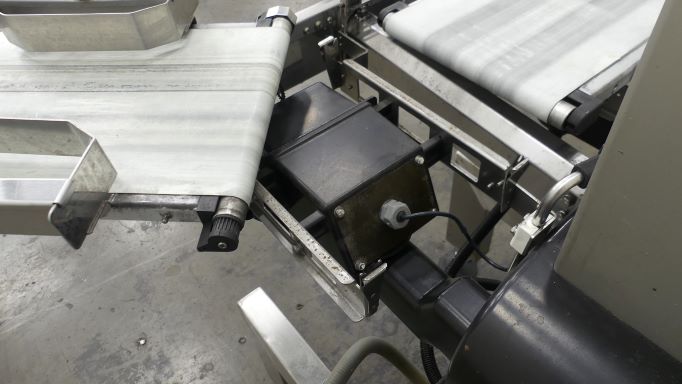How to Secure Load Cells on Single Belt Checkweighers
Keeping the load cells safe during shipment
Checkweighers are used as a quality control measure to verify the correct weight of each package leaving a production line. It detects weight through load cells that sit under the conveyor belt.
The load cells are the key feature of these machines, and if they get damaged, the unit won’t operate properly. That’s why it’s crucial to protect them during shipment and transportation.
Where to find load cells on checkweighers
Load cells are found under the conveyor belt of checkweighers. These conveyors rest on the load cells, and if they stay resting on them during transportation, they can be easily damaged. On smaller checkweighers, you will want to completely remove the conveyor from the load cells before shipment.
Common checkweigher models, like those from Ishida, have clips holding the conveyor in place over the load cells. To remove the conveyor, simply pop out the clips on each side. Once those clips are removed, the conveyor will detach from the belt and the load cells. Many other checkweigher conveyor belts have bolts holding them in place. For those, simply unscrew the bolts and remove the conveyor belt.
Next, you’ll want to secure the removed conveyor to prepare for transportation. It’s important to note that not every conveyor on a checkweigher has a load cell underneath. You will want to keep the conveyor with no load cell on the machine and use it to secure the removed conveyor. With the removed conveyor free from its load cell, place it upside down on the conveyor that doesn’t have a load cell. Then strap the two together to secure them. Once loaded on the trailer, you can begin the blocking and bracing process to ensure maximum protection during shipment.
Four load cell checkweighers
Several larger checkweighers have four load cells under a conveyor. On these, the load cells are directly underneath each corner. To keep the conveyor from resting on the load cells and potentially damaging them during shipment, you need to lift the conveyors off the cells. To do this, all you need to do is raise the bolts found under the conveyor next to the load cells. Keep raising the bolts until the conveyor is completely off each cell. Once elevated, the checkweigher can be loaded onto the trailer and undergo blocking and bracing so the piece of equipment can be fully protected during shipment.
Summary
Before shipping your checkweigher, it’s important to take the time to secure its load cells. If you keep the conveyor resting over the load cells, they could easily be damaged during transit. An easy way to prevent this is to remove the conveyor or raise it off the load cells. Once you do this, your checkweigher is ready to be loaded and prepared for shipment.
If you’re unsure that your checkweigher’s load cells aren’t completely secure, don’t take a chance and potentially inflict substantial damage to your machine. Instead, contact us to see how we can help with logistics to give you peace of mind.
